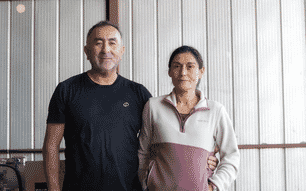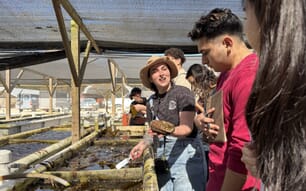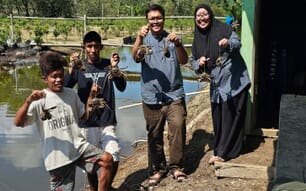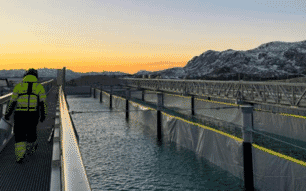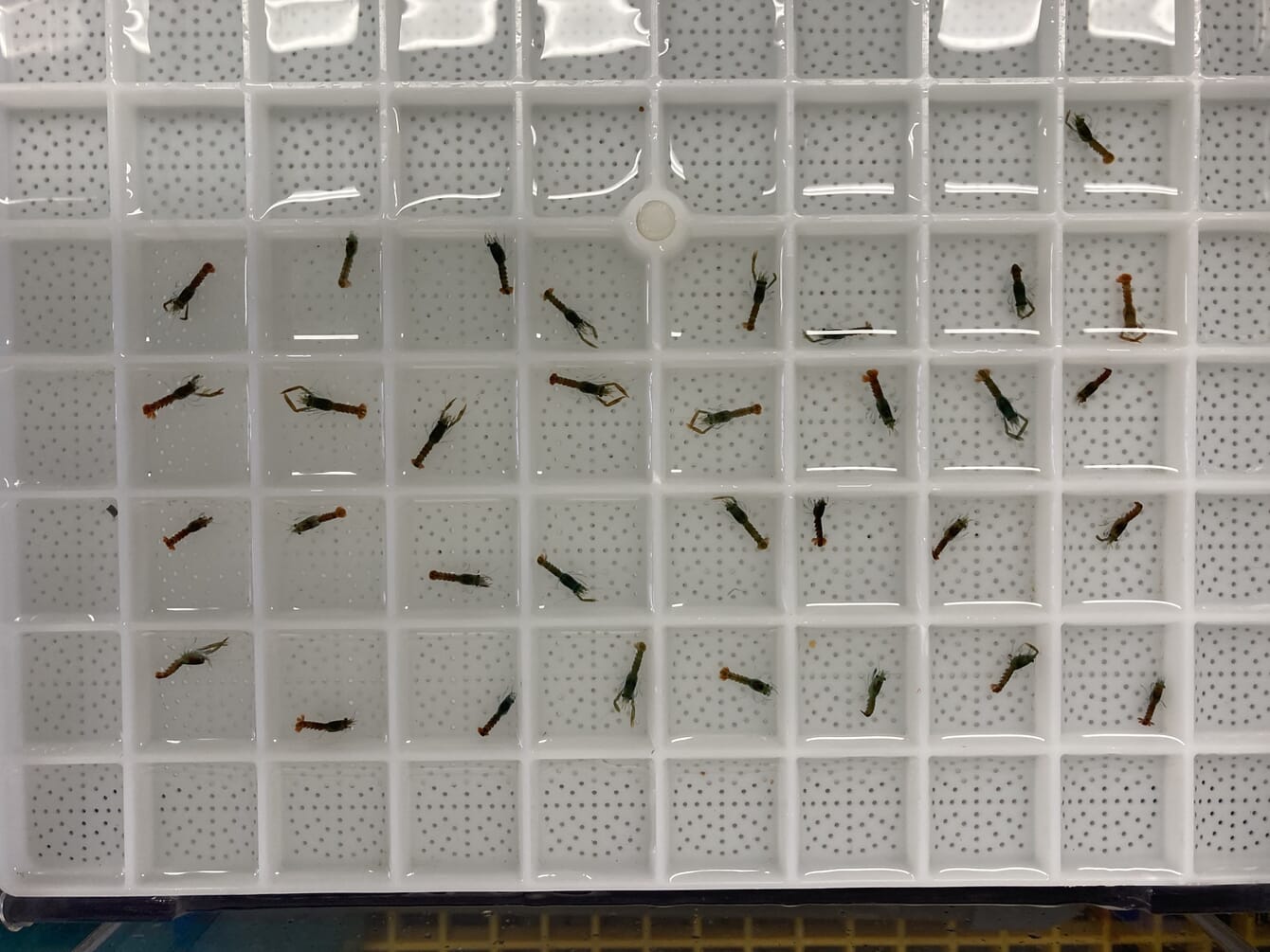
© Ellena Jenks
Jake Norton, project lead, explains the implications.
Can you give us an overview of Balanced Horizon and your own role in it?
Balanced Horizon, previously known as the Caledonian Environmental Restoration Trust, is a new [Scottish] environmental charity. I’ve been working as the director of the Firth of Forth Lobster Hatchery for seven years and was really excited when they got in touch about working together.
Building on a decade of work by the Firth of Forth Lobster Hatchery, we plan to restore native European flat oysters back into the Firth of Forth. Alongside this we will continue to offer internships and training to the next generation of marine biologists and aquaculturists.
What inspired you to join the project?
I have a strong background in aquaculture, having hands-on experience as a biology lead, site manager and hatchery director for aquaculture startups and charities. I enjoy using these skills to restore the stunning Firth of Forth. Having worked with the Firth of Forth Lobster Hatchery since 2017, I’ve seen first-hand the incredible impact a small marine project can have, not just on local biodiversity, but on the people involved. I’m especially proud of the number of young people who’ve come through our doors – from volunteers who’ve gone on to study marine biology, to undergraduates who have used their time with us to step into a conservation or aquaculture career.
This new phase gives us the chance to work with a different species, build on our aquaculture expertise, and contribute to marine restoration in a bigger way. Oysters are a vitally important species to restore in the Firth of Forth, and to have the opportunity to contribute to this is fantastic. The team at Balanced Horizon is incredibly inspiring, including our advisor, Professor Bill Sanderson, a leading expert on native oysters. I am really looking to forward to learning from them.
What plans have you got to develop the hatchery and what experience will you draw on to achieve this?
Our first priority as a charity is to raise the funds needed to develop our site into a fully functioning oyster hatchery. We already have the lobster hatchery side well established, so this next phase is all about expanding into native oyster production to support wider restoration efforts along Scotland’s east coast.
Initially this will involve building ponds for the broodstock to grow for three to four months before being transplanted to the Firth of Forth. This approach is low tech and low cost because the largest cost associated with oyster restoration tends to be microalgae, however the oysters will be able to grow naturally in the ponds with minimal additional algae.
A key deliverable of the project is to provide hands-on experience to as many young marine scientists and aquaculturists as possible. By offering training in RAS and stock management with two different species across two different aquaculture systems, we hope to make a real contribution to addressing the skill gaps in the aquaculture sector.
I’ll be drawing on a wide range of experience to help make this happen. My time running the Firth of Forth Lobster Hatchery taught me how to blend aquaculture with conservation, public engagement, and education. But just as importantly, I’ve worked in startup environments – most recently the sustainable aquafeed company, Aquanzo – where you have to be proactive: ask questions, stay curious, seek advice, and go after what you need.
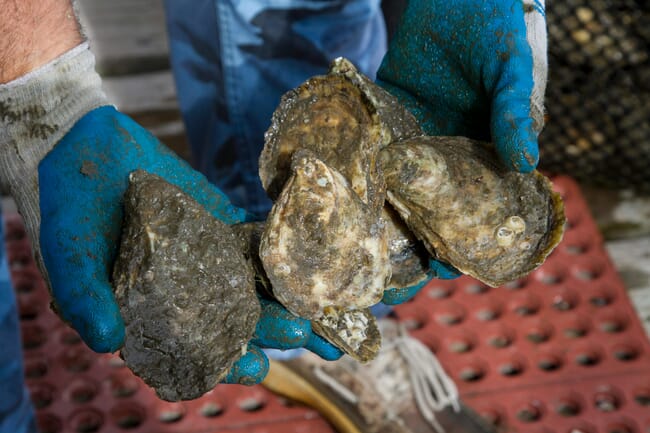
© Forth Marine Hatchery
How will this tie in with your work on oyster restoration?
Oyster restoration is a new area for me personally, but it’s already seen exciting progress here on the Firth of Forth thanks to the incredible work of Restoration Forth. Their project has successfully restored over 40,000 native oysters, achieving an impressive survival rate of around 85 percent. This success has proven what’s possible, but it has also highlighted key logistical challenges that the Forth Marine Hatchery is well placed to address.
At present, all oysters used for restoration in the Forth are grown on Scotland’s west coast. Before being deployed, they must be carefully scrubbed to remove any invasive species that could pose a threat to the east coast marine environment. This process is both labour-intensive and costly. By becoming the first native oyster hatchery on the east coast, we can remove the need for this step entirely, streamlining restoration efforts and reducing risk. We believe that rearing oysters in east coast waters from the start will improve survival rates, as the animals will already be adapted to local conditions. We’re not alone in our restoration ambitions either, as there are several other oyster projects along the east coast including the Humber Estuary oyster restoration project and the Solent Wild Oysters Restoration Project. Our hatchery aims to support and enable them as well, acting as a regional hub for native oyster recovery.
What are the main challenges you will need to overcome?
Like many charities, our biggest challenge will be fundraising. The initial setup of the oyster hatchery will require significant investment, and there will be ongoing running costs to sustain the operation.
Another key challenge will be the first year of oyster production. Working with a new species in a new system inevitably comes with a learning curve. We are expecting a period of fine-tuning and adaptation, and we are actively seeking advice and guidance from experts to help ensure we get it right. That said, we are confident that with the strong support networks we already have, and those we are continuing to grow, we will become an effective and reliable aquaculture site.
How would you like to see the project develop in the years ahead?
We see the Forth Marine Hatchery becoming a leading centre for marine restoration in Scotland – an effective, long-term project that not only supports the recovery of native oysters and lobsters in the Firth of Forth, but also creates real opportunities for people.
We also want to play a meaningful role in supporting academic research. We already have good links with Heriot-Watt University and are keen to build further partnerships with other institutions. By enabling and supporting cutting-edge research, we can ensure that everything we do is grounded in the best available science.
How will you assess the success of the project?
From an ecological perspective, we will look at how many healthy native oysters and lobsters we are able to rear and release, and how well they survive and integrate into the Firth of Forth. We will also track changes in biodiversity and habitat quality at restoration sites over time, using scientific monitoring in collaboration with our university partners.
Equally important is the number of people we are able to support and inspire. If our hatchery helps train the next generation of marine scientists, aquaculture specialists and environmental educators, we will consider that just as vital to long term restoration as the oysters and lobsters.
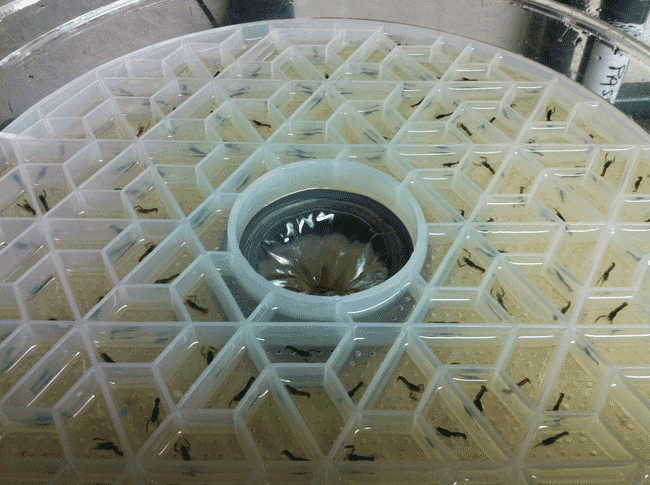
© Forth Marine Hatchery


